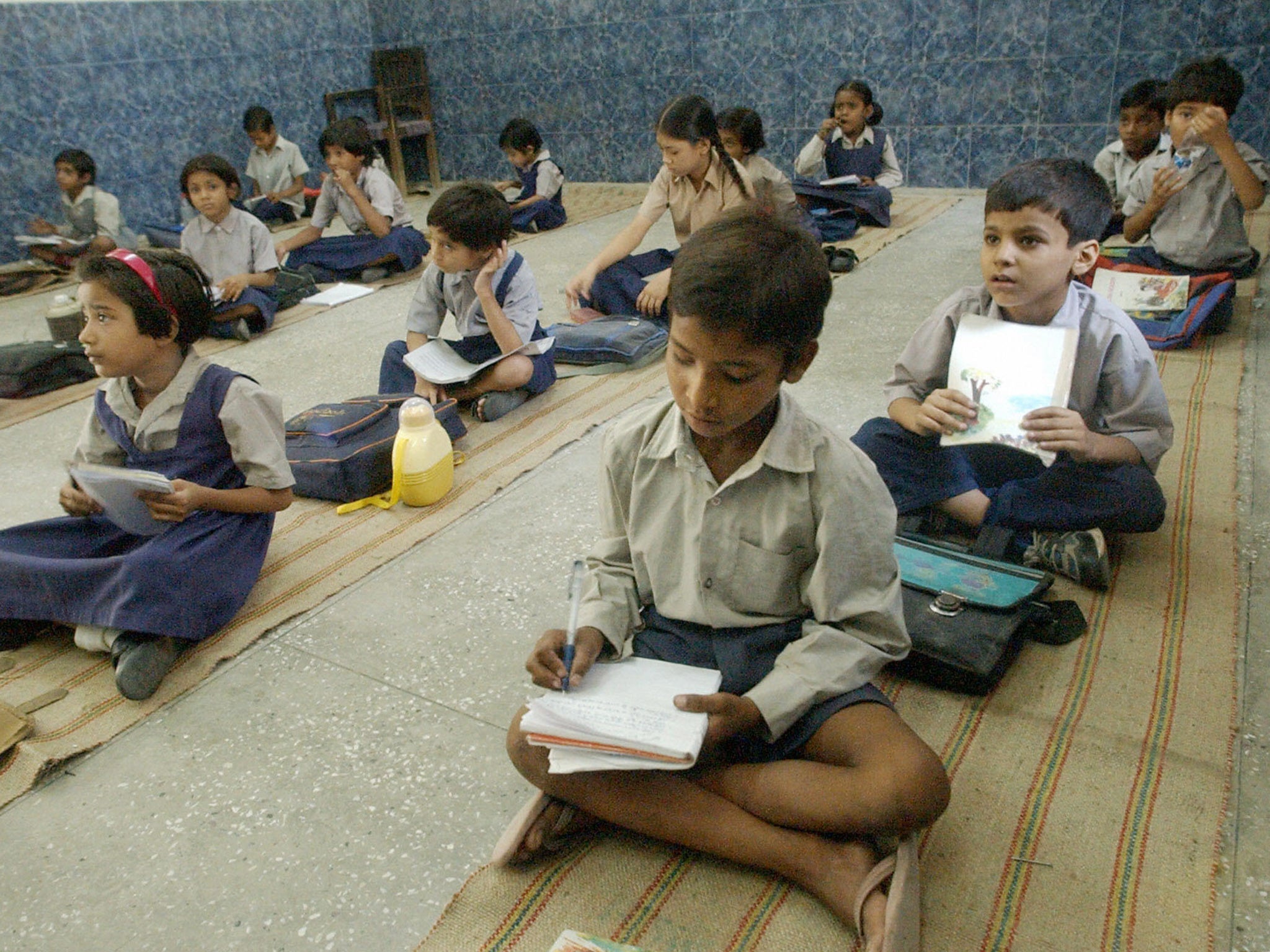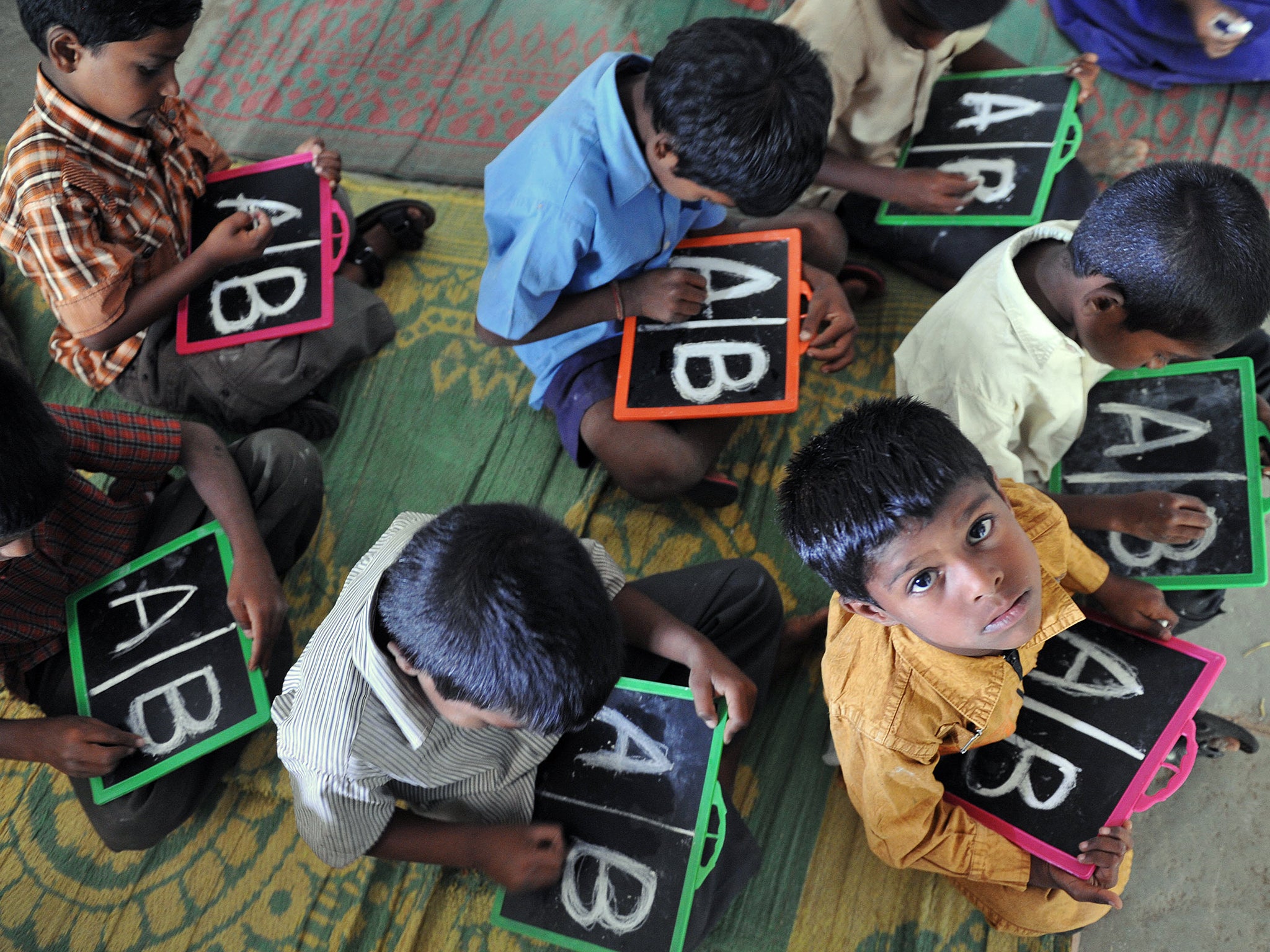India's schools now have an equal ratio of girls and boys, and that's a big deal
The nation has also reduced its out-of-school children by over 90 percent since 2000

Your support helps us to tell the story
From reproductive rights to climate change to Big Tech, The Independent is on the ground when the story is developing. Whether it's investigating the financials of Elon Musk's pro-Trump PAC or producing our latest documentary, 'The A Word', which shines a light on the American women fighting for reproductive rights, we know how important it is to parse out the facts from the messaging.
At such a critical moment in US history, we need reporters on the ground. Your donation allows us to keep sending journalists to speak to both sides of the story.
The Independent is trusted by Americans across the entire political spectrum. And unlike many other quality news outlets, we choose not to lock Americans out of our reporting and analysis with paywalls. We believe quality journalism should be available to everyone, paid for by those who can afford it.
Your support makes all the difference.India has made impressive strides in getting its children into primary schools and especially improving the number of female students, according to a report by UNESCO, released Thursday. But India still lags behind in reducing overall adult illiteracy, and more work needs to be done to raise the quality of education, the report says.
One of the most startling findings in the report shows that India will be the only country in South and West Asia to have an equal ratio of girls and boys in primary and senior school this year – rare good news for a country battling widespread criticism over its treatment of women.
India has also reduced its out-of-school children by over 90 percent since 2000, when 164 countries committed themselves to six global education goals, the report, titled "Education For All Global 2000-2015," says.
The report says India is close to achieving universal enrollment of children in pre-preliminary schools, and it has achieved the target of universal primary school education.
“Back in the 1990s, schools were quite inadequate compared to the number of children. Today, we have achieved access to school for everyone,” said R. Govinda, vice chancellor of National University of Education Planning and Administration. “We now have to make these schools deliver.”

Between 2005 and 2014, India stepped up investment in education from about $14 billion to $62 billion. About 45 percent of schools now have electricity, up from 20 percent in 2003. About 78 percent of paved roads have been built around schools, up from 63 percent. India also passed the ambitious Right of Children to Free and Compulsory Education in 2009, part of a series of rights-based legislation for social services, and levied a special tax surcharge for education.
Even as school infrastructure and facilities improved, learning outcomes remained poor. Fifth-grade students in government-run schools in nine Indian states cannot read second-grade textbooks, said the Annual Status of Education Report in January.
“The children are physically present, but many of them are cognitively absent. Addressing learning is the next major issue for us,” Govinda said. “We have to significantly enhance teacher quality now.”
The report says there are about 781 million illiterate adults worldwide. About 32 percent of the countries – including India – are “very far” from meeting the goal of reducing the levels of adult illiteracy by 50 percent.
“Research in 2009 and 2010 in Brazil, Chile, Croatia, India, Mexico and Rwanda found that men with less education expressed discriminatory gender views, were more likely to be violent at home and, if they were fathers, were less likely to be involved in child care,” the report says.
Globally, only one-third of countries have achieved all the measurable Education for All goals set in 2000, according to the report.
Copyright: Washington Post
Join our commenting forum
Join thought-provoking conversations, follow other Independent readers and see their replies
Comments